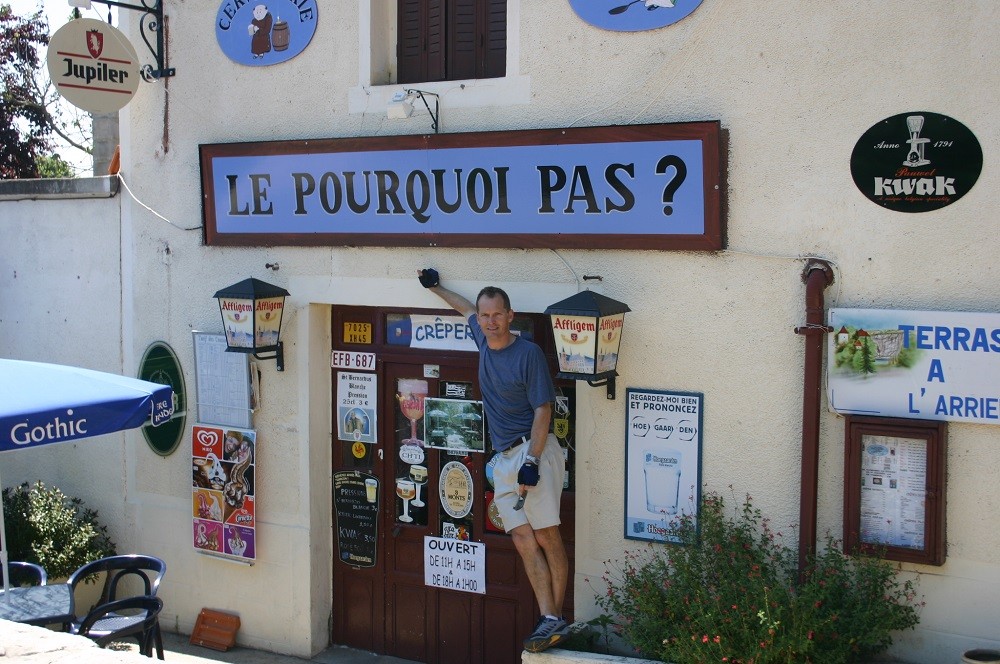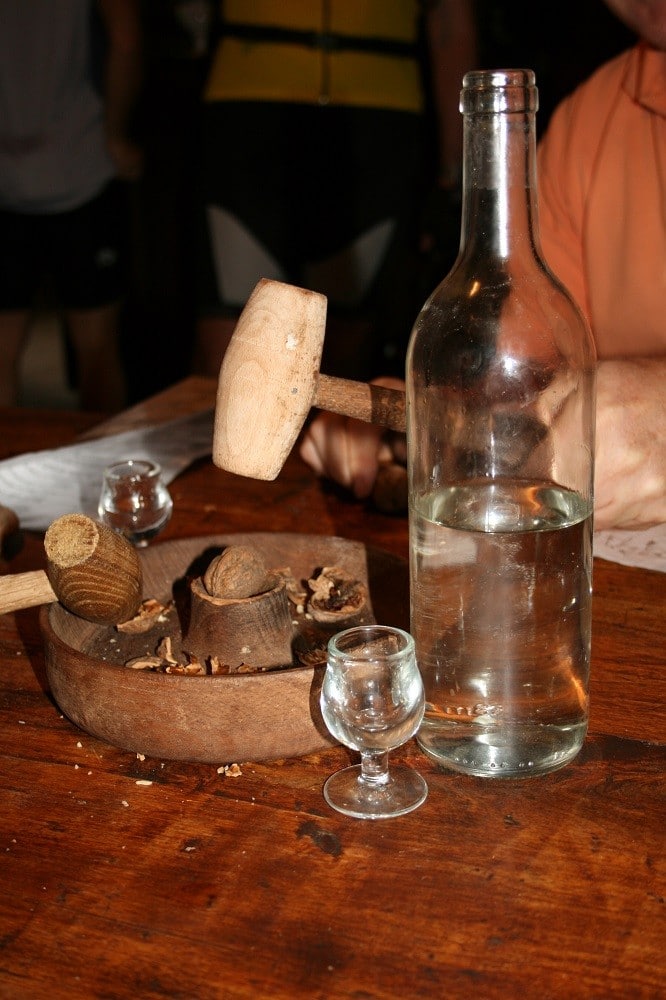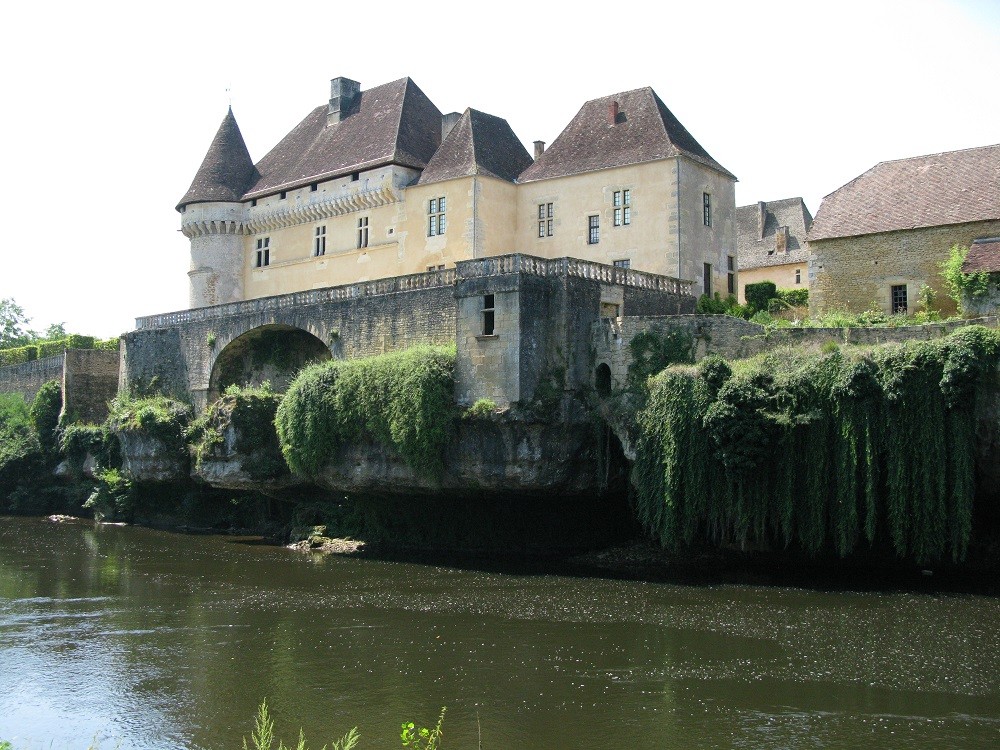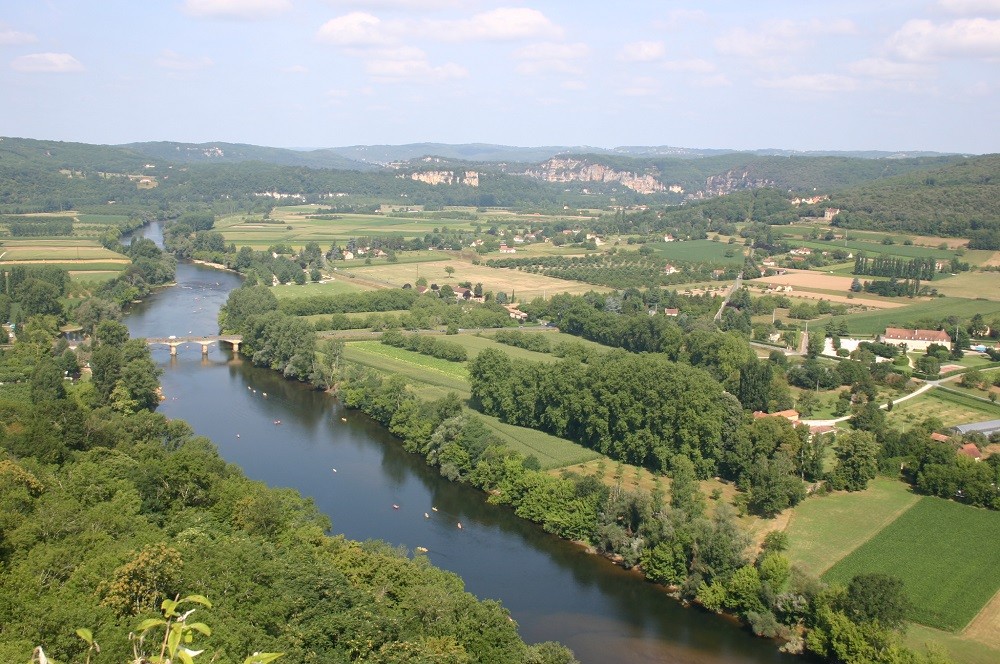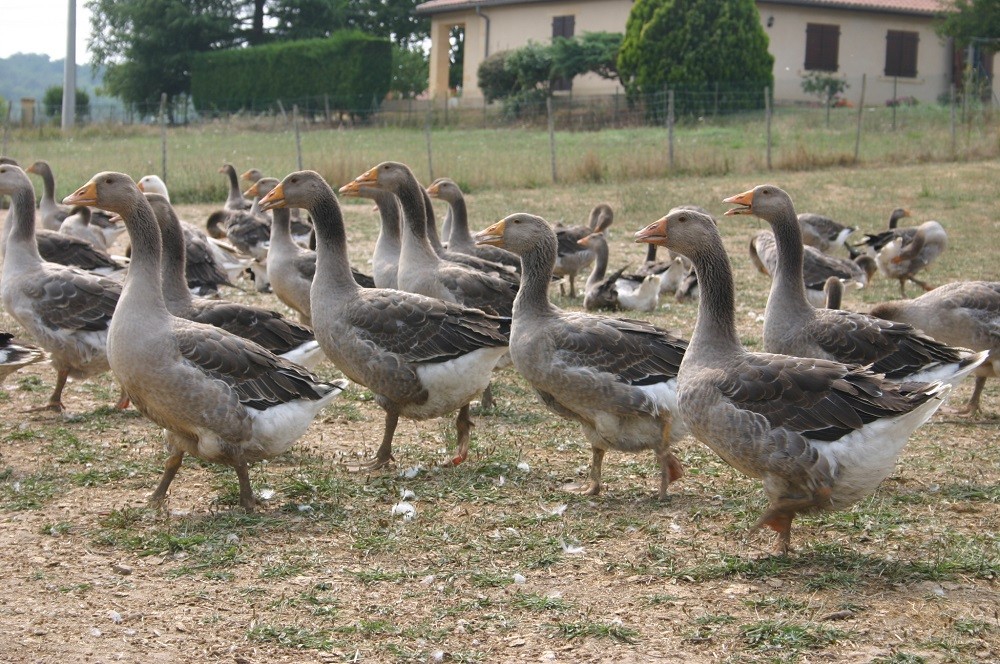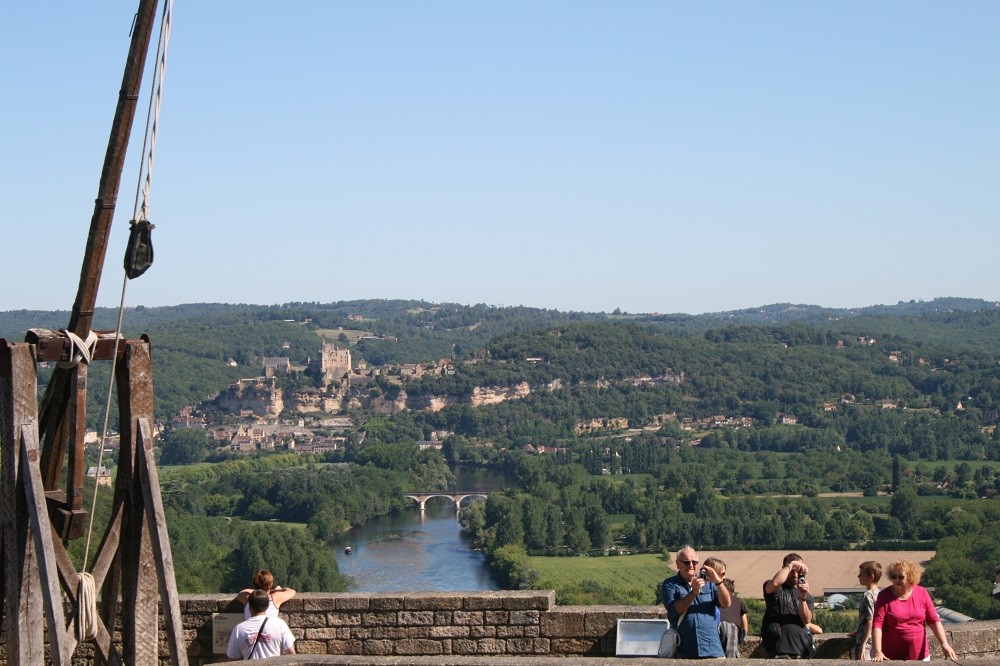What to expect
The most beautiful part of the Dordogne valley is the Périgord Noir, where are Dordogne cycling tour is based. As well as some of the world's most famous prehistoric sites, the Dordogne was the crucible of The Hundred Years War and boasts spectacular medieval castles.
It's also very beautiful, from lush green valleys to the arid limestone causses on the plateau between the Dordogne and Lot rivers. Throw in a distinctive traditional cuisine largely based on duck and goose, but also featuring truffles and walnuts.
The Dordogne cycling holiday is quite hilly, nothing too brutal, but a bit of training in advance wouldn't do any harm.
FROM
- Single Room Supplement: +£380
- Join in London +£450
- Join in Paris +£235
- Transfer from Train Station: +£105
- Airport Transfer: +£220
- Self-Drive: Nil
- Available Dates 2024:
June 29-July 6, July 20-27,
September 7-14

ITINERARY
Day 1 Arriving in the Dordogne
However you decide to travel, we arrive in the Dordogne at Les Eyzies on Saturday evening. Part of the charm of the Dordogne is that, for centuries, it was cut off from the outside world and remains amazingly unspoilt. It is still hard to penetrate and for that reason you should be prepared for an early evening arrival followed by a quick freshen-up before dinner.
We stay at Le Moulin de la Beune, one of the highlights of our entire tour where we can be sure of a warm welcome from Phillippe and Zhanna. This delightful hotel sits on the banks of the river Beune, just upstream from where the Beune joins the Vézère, and we will eat tonight from some of Philippe’s Périgord specialities in the Restaurant au Vieux Moulin.
Les Eyzies is a small village of 900 people, but it styles itself the Capital of Prehistory - and with some justification.
As well as the National Museum of Prehistory, Les Eyzies boasts the settlement of Cro Magnon, where the earliest example of homo sapiens, or thinking man, was discovered. Nearby is one of the oldest sculptures in the world, a 20,000 year-old fish at the Abri de Poisson, and the Font de Gaume, site of some of the most important cave-paintings in the world.
The paintings of Bison and Deer at Font de Gaume are the only polychromatic paintings still open to the public anywhere in the world. It’s very, very difficult to visit the caves, especially as a group. But we’ll see plenty of pre-historic action during our week.
Day 2 Beynac - Previous Owners Include Richard The Lionheart
Time to get on your bike. Today we follow the Vézère to Limeuil where it meets the Dordogne. On the way here we will pass through Le Bugue which is a great place to have our first coffee stop and pick up supplies for a picnic on the river bank if we choose to. Picnic or not, we’ll have lunch in Limeuil, a beautiful bastide town, and where the rivers meet is a great place for a swim. Before lunch we’ll have a brief stop at the church of St Martin, built in the 12th century by Richard the Lionheart to placate a vengeful God following the assassination of the Archbishop of Canterbury by Richard’s father, Henry II of England.
In the afternoon we follow the Dordogne along quiet roads and pass the Châteaux of Beynac and Castelnaud facing each other across the Dordogne. Fans of Josephine Baker may be interested to see her old home at the Château des Milandes.
We finish the day at Beynac, a picturesque village beside the Dordogne dominated by its castle set on a cliff 500 feet above. The castle was once visited by a certain Richard The Lionheart and is well worth a look. You can reach it by an absurdly steep path called the Basketmakers path - but not very quickly, and I dare say not very often if you can help it.
More recently, Beynac played host to the river scenes from the movie Chocolat. We will stay tonight in the Hostellerie Malevile and eat in the family’s restaurant perched on the bank of the Dordogne.
Day 3 Our First Real Climb
On Monday morning, we visit Château Castelnau, the perennial enemy of Beynac. Although both châteaux were held by the English and French armies, nobody ever held both at the same time, and Castelnau has a fascinating medieval warfare museum dedicated to this period of history.
A short ride upstream from Beynac, we pass La Roque Gageac, an amazing town built into the side of a cliff beside the Dordogne, rated as the third site in France and originally built as a prehistoric fort. We also get our first shot at a decent hill on the way up to Domme.
Domme sits 450 feet above the Dordogne and has famous panoramic views of the river. Known as the 'Acropolis of the Périgord', Domme was a key battleground in both The Hundred Years War and The Wars of Religion.
It is still surrounded by a medieval wall and is one of the best preserved of all the Bastide towns. (medieval towns built in south-west France and usually easily recognised by their well-planned, grid system of streets) It was used to imprison the Knights Templar in the 14th century, and on top of all this is the site of some interesting limestone caves.
From Domme to Payrac we go cross-country on tiny roads and see barely a soul. This is beautiful riding countryside where you will be assailed by the scent of strawberries, plums, blackberries and figs.
Today is a tough day - 30 miles – and probably the hilliest of the week but the swimming pool in the hotel at Calés and the superb food this evening are welcome and well-deserved.
Day 4 Rocamadour and the Gouffre de Padirac
As we leave Calés this morning, down a simply breath-taking descent, notice how the landscape has changed from the lush farmland of yesterday to the arid limestone causses on the way to Rocamadour. At the base of the first descent is the ancient fortified mill of Cougnaguet. This enchanting pocket of French history gives us a fascinating insight into the lawlessness of this region during the 13th century.
Leaving the mill, we can head across country on the old pilgrim’s way into Rocamadour, one of the most spectacular towns in France, clinging to the side of a cliff hundreds of feet above the Alzou Gorge. The town developed around the site of a 13th century hermitage, and is now ranked as the second site in France. Michelin gave Rocamadour 3*** - worth a journey in itself - and it is unforgettable.
The afternoon is easier than this morning's climb but you can make up for this if you choose to use the stairs rather than the elevator when we visit the Gouffre de Padirac, a massive cavern leading to an underground river with spectacular stalactite and stalagmite formations. Another Michelin 3*** attraction, and although the staff are bad even by French standards of customer service, the Gouffre de Padirac is unmissable. The underground journey, including a boat trip along the river will last around an hour and you should ensure you have something warm to wear,
By the time we emerge from the cave, it is usually late afternoon, and a 5-mile cycle ride brings us to the Hotel Lou Cantou in Loubressac, and the tender mercies of the Cayrousse family. Loubressac sits on the edge of the Causses, and we get beautiful views across both the Dordogne and Bavé valleys.
Day 5 …And back to the Valley of the Dordogne
There is an excellent downhill cycle ride into the village of Autoire and on the way here we should certainly stop at the overlook and admire the superb Cirque d’Autoire, a limestone horse-shoe dominating the valley. From Autoire we head across country into St Céré where, two Wednesdays each month, there is a great food market - great for picnic fodder. Out of St Céré we pass the huge and ruined castle at Castelnau and arrive back at the Dordogne. We follow the Dordogne downstream to Carennac, rated by some as the most beautiful village on the Dordogne, and a great place for a picnic.
After Carennac the road twists and turns as it follows the Dordogne, we cross the river a couple of times and pass the spot where the underground river from the Gouffre de Padirac enters the Dordogne. We pass several minor châteaux on our way to Gluges, where the pool catches the late afternoon sun and offers a perfect end to the day.
Although we cycle more than 30 miles today, it is the easiest 30 miles you're ever likely to ride with the disappointing exception of what always seems to me like a wholly unnecessary hill just before Gluges. But you’re not too far from a beer at journey’s end.
Day 6 We Take to the Water On Our Way to Sarlat-la-Caneda
This stretch of the Dordogne cuts right through the limestone causses offering spectacular gorges and cliffs. Our route criss-crosses the river using back-roads to avoid some unseemly hills, but nearly everybody misses the first stretch altogether, opting to canoe downstream to Pinsac. This stretch of the river is home to kingfishers and herons.
After lunch we follow tiny backroads from Souillac to Sarlat-la-Caneda, entering the town on a cycle path built on a disused railway. One look at the traffic queues in Sarlat will make you very happy you cycled here.
Our hotel is the Hotel Compostelle, a beautifully modernised hotel near the heart of the old town. Sarlat is so well preserved that it also rates 3*** from Michelin. During this week you could be forgiven for imagining that Michelin give 3*** away like confetti. But if you look at their guidebooks for other regions, you can see that there are hardly any sites awarded 3***. It’s just that the Dordogne valley really is that good.
Tonight we stroll into the labyrinthine old town to Les Jardins d'Harmonie for a meal that, I think, rivals even Monday’s dinner in Calés. You will have to judge for yourselves.
Day 7 Spectacular Pre-Historic Double
This is the last day of our cycling holiday, so we've put in a ‘couple of hills’. Do you remember how we described Monday as ‘probably the hilliest day of the week’? Well, today is why we inserted the probably but it’ll be okay – Friday’s route is just to show you how fit you've become. Once we leave Sarlat we turn onto tiny country roads that lead to the hilltop town of Marquay and beautiful views across the Vézère and Beune valleys.
Descending to the Vézère we've arrived back in prehistory territory. We pass the Abri de Cap Blanc with its sculptures on the way to the amazing prehistoric fort at La Roque St Christophe. This village was carved out of overhanging galleries in a 900 metre limestone cliff. It was continuously inhabited from 50,000 BC until the 16th century at which point it was destroyed by the English. (Sorry everyone.)
There are records of the settlement in Roman accounts - although they never managed to capture it - and also in 16th century government record in Paris where details of the fireplaces were kept to levy 'hearth taxes'. This place is incredible - for me the most amazing site we visit all week. You can identify the church, rings cut in the roofs to hang food, and even safes and water stores.
Les Eyzies is another 5 miles, and if we haven’t been able to visit the Font de Gaume, there is the National Prehistory Museum to round off a real prehistory day.
Sadly, this is the end of our cycling holiday in the Dordogne, and we have definitely earned a beer or several sat at Le Moulin de la Beune on the banks of the Beune.
JOINING DETAILS
Please take careful note of the train times. Our transfers are scheduled to meet these designated trains; if these train times are inconvenient, please contact us so that we can be sure of arranging appropriate transfers.
Quick links

